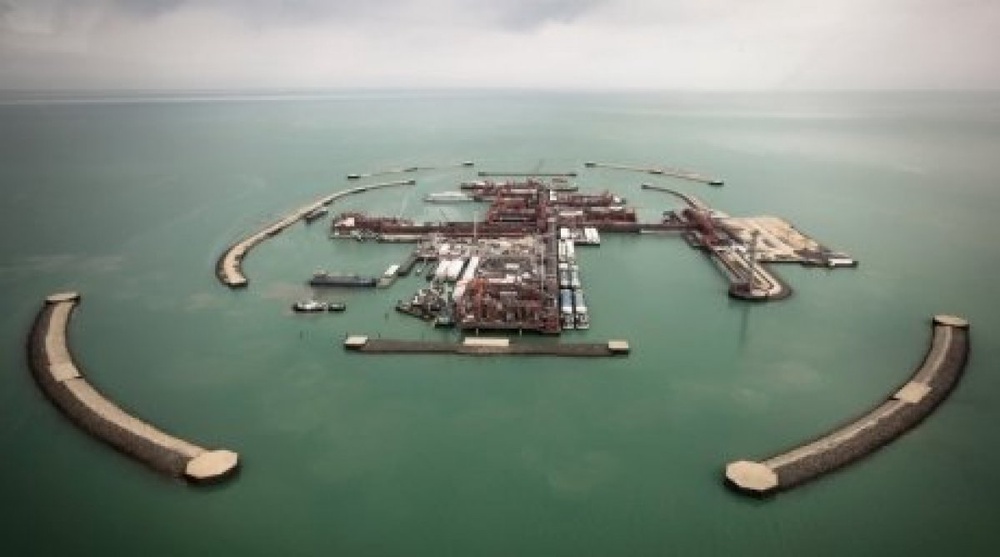
Experts are expected to release their statements on the condition of malfunctioning pipelines at the Kashagan field in mid-January 2014, Tengrinews reports citing Malik Salimgereyev, Managing Director of Samruk-Kazyna, as saying at the press-briefing yesterday. "The Welding Institute (TWI) in Cambridge, UK, is testing the pipeline joints to find causes of the leakages. Preliminary reports on the results of the scraper diagnostics and Welding Institute's analyses are due in January 2014," Malik Salimgereyev said. North Caspian Operating Company B.V. (NCOC), the Kashagan field operator, will use the results to put together a schedule and an action plan to resume production at the Kashagan oil field, he said. "Excavation works at the onshore section of the gas pipeline have been completed, while the ground works at the onshore section of the oil pipeline are still on to check pressurization of the pipeline. Cleaning of the pipe has been completed, so as the preparations for launching a polymer scraper. Some of the sections are being subject to magnetic powder and ultrasonic flaw detection tests. Six of the checks have already been completed with no leakages found," Salimgereyev pointed out. The giant oilfield started producing oil on September 11, 2013, but on September 24 it was suspended after a gas leak at the pipeline from Island D to the onshore Bolashak refinery was discovered. Consequently the defective junctions were replaced and oil production from the field was resumed. But on October 9 the production was haltered again because another gas leakage was discovered. When repairs of the defective section were finished, a fully controlled hydro test was made. It revealed more potential leaks. The production was stopped and a thorough investigation was unleashed. A part of the defective pipe was dug up and set to a lab in Britain for tests. Industry experts believe that there may be hairline fractures in the pipe caused by corrosion that occurred because of high content if sulfurated hydroge gas at the Kashagan oil field. By Baubek Konyrov





Experts are expected to release their statements on the condition of malfunctioning pipelines at the Kashagan field in mid-January 2014, Tengrinews reports citing Malik Salimgereyev, Managing Director of Samruk-Kazyna, as saying at the press-briefing yesterday.
"The Welding Institute (TWI) in Cambridge, UK, is testing the pipeline joints to find causes of the leakages. Preliminary reports on the results of the scraper diagnostics and Welding Institute's analyses are due in January 2014," Malik Salimgereyev said.
North Caspian Operating Company B.V. (NCOC), the Kashagan field operator, will use the results to put together a schedule and an action plan to resume production at the Kashagan oil field, he said.
"Excavation works at the onshore section of the gas pipeline have been completed, while the ground works at the onshore section of the oil pipeline are still on to check pressurization of the pipeline. Cleaning of the pipe has been completed, so as the preparations for launching a polymer scraper. Some of the sections are being subject to magnetic powder and ultrasonic flaw detection tests. Six of the checks have already been completed with no leakages found," Salimgereyev pointed out.
The giant oilfield started producing oil on September 11, 2013, but on September 24 it was suspended after a gas leak at the pipeline from Island D to the onshore Bolashak refinery was discovered. Consequently the defective junctions were replaced and oil production from the field was resumed. But on October 9 the production was haltered again because another gas leakage was discovered.
When repairs of the defective section were finished, a fully controlled hydro test was made. It revealed more potential leaks. The production was stopped and a thorough investigation was unleashed.
A part of the defective pipe was dug up and set to a lab in Britain for tests. Industry experts believe that there may be hairline fractures in the pipe caused by corrosion that occurred because of high content if sulfurated hydroge gas at the Kashagan oil field.
By Baubek Konyrov

 +7 (777) 001 44 99
+7 (777) 001 44 99




 Қазақша
Қазақша Русский
Русский English
English














































